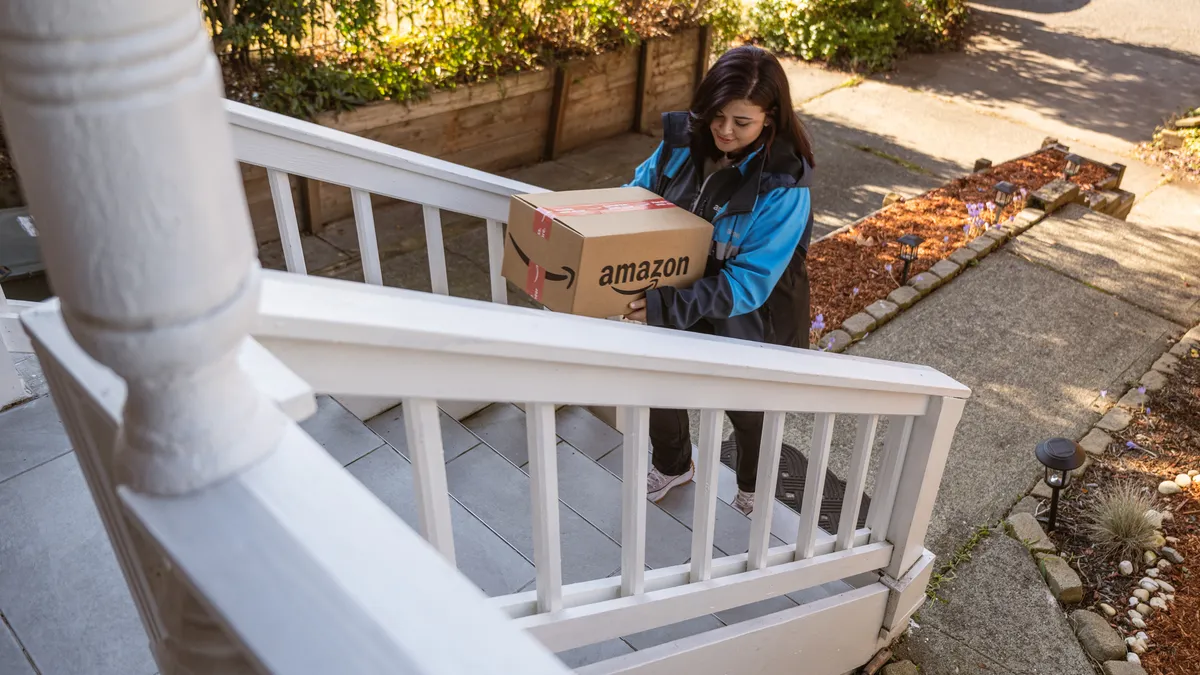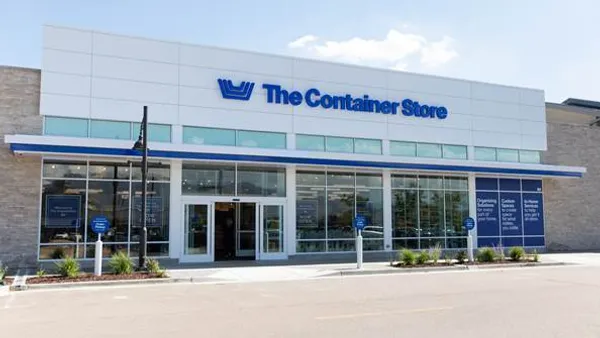Dive Brief:
-
Thanks to cost-containment efforts, fulfillment improvements and its summer Prime Day sale, Amazon on Thursday reported Q3 gains in both its online (up 7.1% to $57.3 billion) and physical store sales (up 5.6% to $5 billion). Product sales rose 6.5% to $63.2 billion.
-
The loftiest increases in the period were less in its retail operations and more in related enterprises like third-party seller services (up 20% to $34.3 billion); subscriptions (up 14.2% to $10.2 billion); and advertising (up 26% to $12 billion).
-
Fulfillment costs rose 8.4%, while worldwide shipping costs rose 9.3%. Thanks in part to the performance of the company’s AWS cloud services, and the lapping of last year’s profit impact from its Rivian investment, net income soared 244% to $9.9 billion.
Dive Insight:
Like most U.S. retailers, Amazon is facing a notable penchant for frugality among consumers. But customers turned to the e-commerce giant for deals on essential items, Chief Financial Officer Brian Olsavsky told analysts on Thursday.
“From a customer behavior standpoint, we still see customers remaining cautious about price, trading down where they can and seeking out deals, coupled with lower spending on discretionary items,” he said.
Consumer sentiment likely fueled its summer Prime Day sale, according to emailed comments from GlobalData Managing Director Neil Saunders.
“Prime Day proved to be extremely valuable, and the flagship event helped to stimulate some demand from consumers who were eager to snag a bargain and get things they needed at discounted prices,” he said. “While other retailers have jumped on Amazon’s bandwagon, Prime Day remains the most attractive game in town during the period because of the breadth of offers and deals available — something that has become very important to the cost-conscious consumer.”
On a call with analysts Thursday, CEO Andy Jassy said a second Prime sale held this month was the company’s “most successful October holiday kickoff event ever.”
Unlike many retailers, Amazon has other lucrative streams of revenue to make up for the softness in discretionary spending. Jassy said that advertising in particular has room to grow.
“I think that we have barely scraped the surface with respect to figuring out how to intelligently integrate advertising into video, into audio and into grocery,” he said. “So, I think we're early days in that. I think that we also started externalizing some of our products like sponsored products to third-party websites.”
Thanks to ads, Prime Video is set to morph from being a perk that keeps Prime members locked in to a money-maker, Jassy also said. Beginning early next year, Prime Video shows and movies will include advertising, though “meaningfully fewer ads than linear TV and other streaming TV providers,” he said. U.S. customers will be able opt out of ads for an extra $2.99 per month, he said.
“We also have increasing conviction that Prime Video can be a large and profitable business in its own right as we continue to invest in compelling exclusive content for Prime members, but also offer the best selection of premium streaming video content anywhere with our marketplace offering,” he said.
The company made better-than-expected progress on efforts to streamline and speed up its fulfillment. The strong third quarter doesn’t inoculate Amazon from macroeconomic pressures, but positions it well to weather them, Julian Skelly, retail lead at digital consultancy Publicis Sapient, said in emailed comments.














